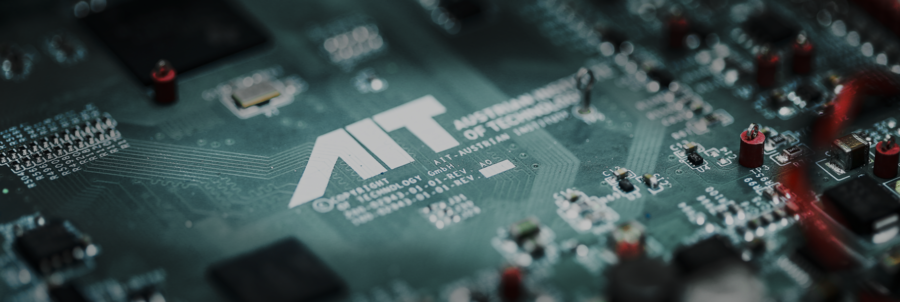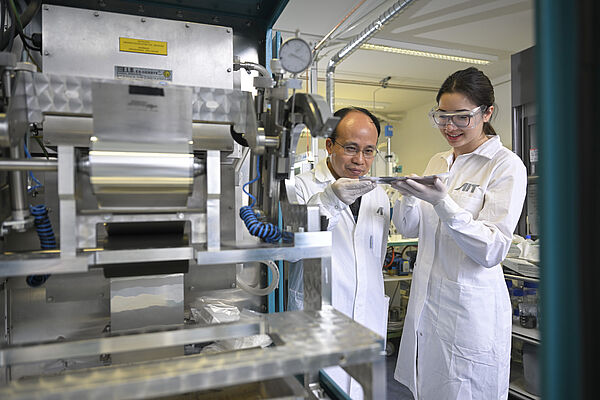How can lithium-ion batteries be made more powerful, safer, and more sustainable at the same time? What technologies are needed to achieve this – and how can application-oriented research help to bring ideas from basic research closer to the industrial application? These are the challenges addressed by the European research project RESTINA (REcovered Silicon / TIN Sulphide Nanocomposite Anode Materials for Generation 3b Lithium Ion Batteries). The aim is to develop new anode materials in which technological innovation plays a central role in environmental compatibility and sustainability – supported by an international consortium of research and industry led by the AIT Austrian Institute of Technology.
Innovation through recycling and scalable synthesis processes
RESTINA focuses on developing high-performance anode materials for third-generation lithium-ion batteries. The core technology consists of nanocomposites made from recycled silicon – obtained from end-of-life photovoltaic modules – and tin sulfide (SnS₂). This novel material combination combines the high specific capacity of silicon with the good electrical conductivity of tin compounds.
During the charging process, Si/Li₂S and Sn/Li₂S heterostructures should form at the interface between the anode material particles to buffer mechanical stresses – which occur as a result of the volume expansion – and improve the long-term stability of the anode. RESTINA thus specifically addresses the weaknesses of conventional Si-based anodes, such as particle breakage, instability of the SEI (solid electrolyte interface) layer, and low conductivity.
Designing materials instead of just testing them
RESTINA pursues a holistic approach to material development that combines synthesis, surface modification, structural characterization, and upscaling. Two complementary, scalable processes are used to design the Si/SnS2 composites: the solvothermal process using environmentally friendly solvents and high-energy ball milling.
In addition, to improve environmental compatibility, carbon-based protective layers are being developed to stabilize the particle surfaces. These coatings not only enable safe handling in air (without the release of toxic gases such as H₂S), but also water-based processing of the electrodes – an important step towards green battery technology. In addition, this approach allows the electrode materials to be recycled later in aqueous media without harmful side reactions.
From material to cell
As project coordinator, the AIT Austrian Institute of Technology is responsible for key tasks in the RESTINA project – from material development to cell production. At AIT, Si/SnS₂ nanocomposites are not only developed but also scaled up to an industry-compatible production level. In addition, Generation 3b pouch cells with capacities between 2 and 5 Ah will be manufactured using the novel anode materials and high-Ni cathode materials. In both cases, environmentally friendly, water-based processing methods will be used for electrode fabrication.
Together with the University of Liège, AIT is investigating the electrochemical aging mechanisms of the materials. The University of Vienna is providing fundamental insights into phase diagrams, crystal structures, and thermodynamic properties of the Si/SnS₂ system. Industry partner FRIMECO Produktions GmbH is contributing its expertise in the scalable synthesis and coating of the nanocomposites.
The project consortium aims to achieve a technology readiness level (TRL) of 4 by 2025 – an important milestone on the road to sustainable high-performance batteries “made in Europe”.
"In battery research, we are faced with the challenge of bringing together material performance, industrial feasibility, and environmental responsibility. RESTINA is pursuing precisely this integrated approach: We combine recycled silicon with innovative materials chemistry and sustainable processing to develop a new class of high-performance anode materials for future battery generations. The project shows how materials research can make a concrete contribution to the energy transition – from the idea to the pilot cell," explains Dr. Damian Cupid, Senior Scientist at the AIT Austrian Institute of Technology and project manager of RESTINA.
Project consortium
AIT Austrian Institute of Technology (coordinator)
Funding frame
M-ERA.NET / FFG – Mobilität der Zukunft




